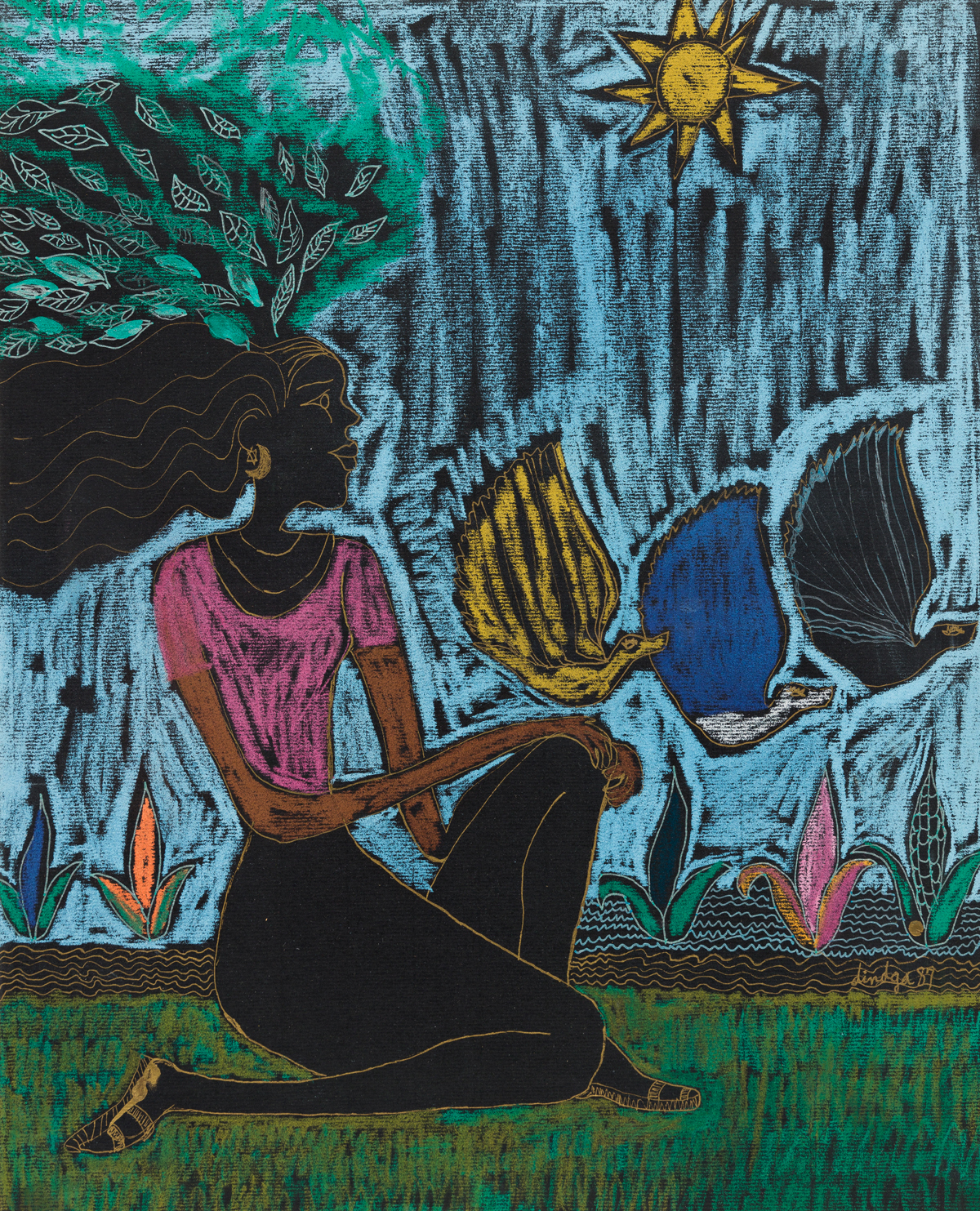BLACK WOMEN AND NATURE IN THE EYES OF ECOFEMINISM
The painting “Egyptian Fantasy” by Dindga McCannon holds profound significance for me. As a Black woman, I’ve often struggled with self-esteem and encountered discriminatory experiences in public spaces. However, this artwork offers a powerful antidote to those negative encounters.
The image of a Black woman kneeling in harmony with nature resonates deeply with me. It symbolizes a sense of hope, self-worth, and connection to the natural world. Through the lens of ecofeminism, this painting challenges dominant narratives of separation and control, instead embracing the interconnectedness of human and natural worlds.
For me, this artwork serves as a reminder that my worth and value come from within. It’s a celebration of Black womanhood, self-love, and self-care. In a world that often seeks to diminish our voices and experiences, this painting stands as a testament to the power and resilience of Black women.
https://images.app.goo.gl/HT88nTio7snxmJo99
Source of picture
The image of a black woman kneeling in a peaceful environment, surrounded by growing grass, baby trees, and flying birds, explicitly conveys a sense of Through an ecofeminist lens, this painting represents the interconnectedness of women and nature. The woman’s peaceful coexistence with birds and plants symbolizes harmony and balance. Her kneeling position conveys reverence and respect for the natural world. The image challenges dominant narratives of human-nature separation, instead embracing a holistic, reciprocal relationship. The woman’s connection to nature also highlights the importance of preserving and protecting the environment, echoing ecofeminist principles of mutualism and care.
DESCRIPTION OF IMAGE IN MY OPINION
The image of a black woman kneeling in a peaceful environment, surrounded by growing grass, baby trees, and flying birds, explicitly conveys a sense of Hope serene atmosphere, and signs of new life suggesting a promising future. On the other hand, one can say a woman’s peaceful coexistence with nature implies a balanced relationship therefore suggesting serenity
The image highlights the bond between humans, particularly women, and the natural world.
Through an ecofeminist lens, this image can be seen as:
As a black woman myself I see that by portraying a woman in a peaceful, natural setting, the image reclaims the feminine association with nature, challenging patriarchal notions that often view women as separate from or dominant over nature. Women naturally have a connection with Nature
In my culture for example we recognize the sacred bond between women and the natural world, often associating women with the earth, fertility, and life-giving forces. Many have taken this into account through written poems and literature connecting women to nature or the earth some examples of this are Toni Morrison’s “Beloved” and Zora Neale Hurston’s “Their Eyes Were Watching God” explore the relationships between women, nature, and the African American experience.
Another example is the work of artists like Agnes Denes and Ana Mendieta highlight the connections between women’s bodies, nature, and the environment, often using ecofeminist principles to challenge dominant narratives.
Some Real-life examples of women’s connections to nature that I’ve come across are those of
Wangari Maathai, Chandi Prasad Bhatt, and Vandana Shiva have led environmental movements, highlighting the importance of women’s roles in conservation and sustainability.
Also, in the past women have played crucial roles in indigenous land rights movements, advocating for the protection of ancestral lands and the preservation of traditional knowledge.
In conclusion one can say through an ecofeminist lens, this painting represents the interconnectedness of women and nature. The woman’s peaceful coexistence with birds and plants symbolizes harmony and balance. Her kneeling position conveys reverence and respect for the natural world. The image challenges dominant narratives of human-nature separation, instead embracing a holistic, reciprocal relationship. The woman’s connection to nature also highlights the importance of preserving and protecting the environment, echoing ecofeminist principles of mutualism and care.
citation
Viso, O.M.(2004).Ana Mendieta:Earth bod, sculpture and performance 1972-1985.Hatje Cantz Publishers.
Earth Democracy: Justice, Sustainability, and Peace (2005)*
Shiva, V. (2005). Earth democracy: Justice, sustainability, and peace. South End Press.



 pic courtesy by Molly Mastantuono https://www.bentley.edu/news/ecofeminism-answer-climate-crisis
pic courtesy by Molly Mastantuono https://www.bentley.edu/news/ecofeminism-answer-climate-crisis